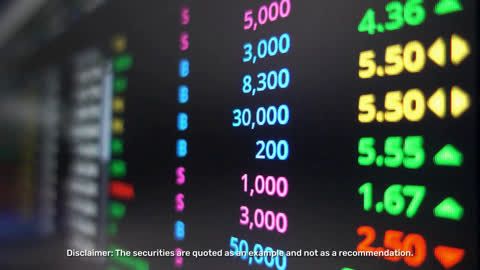What are Donchian Channels?
Donchian channels, a technical analysis tool named after its creator Richard Donchian. It helps traders identify trends, breakouts, and reversals in the market. They are formed by taking the highest high and the lowest low of the last n periods and plotting them as upper and lower bands around a middle band which is the average of the two. The period n can be adjusted according to the trader’s preference and strategy. However, the common practice followed by the traders is to analyse the 20-days period using the donchian channel indicator.
What does the donchian channel indicator look like?
The donchian channel consists of three primary lines on a price chart:
- Upper band: This line represents the highest price reached over a specified period, typically set to 20 periods by default. It serves as a resistance level, marking the upper limit of the trading range.
- Lower band: Contrarily, the lower band represents the lowest price reached during the same specified period as the upper band. It acts as a support level, indicating the lower limit of the trading range.
- Middle line: This line represents the average of the upper and lower bands. It offers a reference point for evaluating the current price's relative position within the trading range.
How to calculate donchian channels?
Calculating donchian channels is relatively straightforward. Follow these steps:
- Select a specific time frame (e.g., 20 periods) for your analysis.
- Identify the highest high and lowest low-price points over that time frame.
- Plot the upper band at the highest high and the lower band at the lowest low.
- Calculate the middle line as the average of the upper and lower bands.
Interpreting the donchian indicator
1. Breakout indicator
One of the primary applications of Donchian Channels is identifying potential breakouts. Here's how to use them for breakout trading:
- Buy breakout: When the price breaks above the Upper Band, it may signal an uptrend. Traders often consider entering long positions.
- Sell breakout: Conversely, if the price breaks below the Lower Band, it might indicate a downtrend. Traders may consider entering short positions.
2. Middle channel trading
The middle line in donchian channels can serve as a valuable tool for traders:
- Trend confirmation: If the price consistently remains above the Middle Line, it can confirm an uptrend. Conversely, prices consistently below the Middle Line may indicate a downtrend.
- Range trading: Traders can look for buy opportunities near the Lower Band and sell opportunities near the Upper Band as prices revert to the mean (Middle Line).
How to use the donchian indicator to make trades?
Some common ways to use donchian channels are:
- To enter a long position when the price breaks above the upper band, or a short position when the price breaks below the lower band.
- To exit a position when the price crosses the middle band, or when a reversal signal is generated by another indicator.
- To determine the strength of a trend by looking at the width of the channel. A wider channel indicates a stronger trend, while a narrower channel indicates a weaker trend.
Conclusion
Donchian channels are a simple but effective tool for traders who want to capture market movements and avoid trading in choppy or sideways markets. However, they should be used with caution, as they can generate false signals in volatile or ranging markets. Therefore, it is advisable to combine them with other indicators, such as volume, momentum, or trend-following indicators, to confirm the signals and filter out noise.
Moreover, like any trading tool, they are most effective when used in conjunction with other analysis methods and risk management strategies. Practice and a deep understanding of donchian channels are essential for successful implementation.




